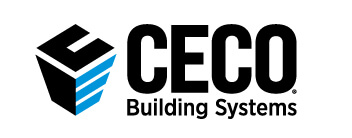03 Jun What’s Happening with the Steel Market in 2022?
MARKET UPDATE: JUNE 2022
A glance at what’s happening in the market that impacts our industry and your business.
Steel Costs remain volatile due to the outbreak of the war in Ukraine and other macro-economic factors.
In this Market Update, we highlight some of the key factors impacting today’s steel prices and what to watch in the future.
WHAT TO KNOW, IN SUMMARY
The outlook for steel prices and supply & demand for 2022 and 2023 is highly uncertain. The expectation of a continued and stable recovery from the pandemic has been shaken by the war in Ukraine, rising inflation, supply chain challenges and geopolitical instability.
The geopolitical situation surrounding Ukraine poses significant long-term implications for the global steel industry. Among them are a possible readjustment in global trade flows, a shift in energy trade and its impact on energy transitions, and continued reconfiguration of global supply chains.
WHAT’S HAPPENING NOW
Import Steel
Domestic buyers placed orders for large quantities of imports in January and February. Import costs were favorable to domestic costs, but after the war in Ukraine broke out on February 24, import orders decreased significantly. Therefore, we expect to see lower import volume arriving in the summer and fall of 2022.
Steel Production
- Mill lead times decreased in April and May and have returned to normal levels. Further decreases to lead times are not expected.
- Tons produced have declined in the past 3 weeks and remain below 2021 levels.
- Cold Rolled steel costs are likely to remain around $400-$500/ton higher than Hot Rolled steel. This is much higher than the historical average of $200.
- labor costs and limited Cold-Rolled capacity are driving this trend.
- Supply of iron ore is extremely volatile as Ukraine is the sixth largest global supplier.
Geopolitical Tension
- The war in Ukraine has resulted in cost increases for the raw materials used in steel production. Supply is tight for raw materials such as iron ore, scrap metal, coke, aluminum and zinc.
- China has made the decision to de-carbonize its steel production. The timing is uncertain, but there will be additional costs. A large percentage of China’s steel mills are specifically designed to export to the international market, and they can have a significant impact on global supply.
WHAT WE’RE WATCHING
The global labor shortage is expected to challenge production and delivery costs for steel mills and fabricators throughout 2022 and 2023. The mills have also increased their offerings of spot purchases at discount prices in May. Historically, rapid changes in steel mill costs are often followed by a market correction. The market has a history of overreacting to changes in the supply and demand dynamics that drive steel costs, so price corrections are common, particularly in the US.
Spot prices for Galvalume have not decreased as much as other steel categories. Galvalume costs tend to be more volatile due to the smaller number of buyers and sellers in the market.
Steel Demand
- Demand for the four largest consumers of steel remains strong. Demand for new construction remains strong despite an increase in interest rates. Builders report that their largest concern is the lack of qualified labor.
- Demand for automobiles is strong, but production levels are volatile due to the chip shortage. The quantity of chips produced has been very fluid and nearly impossible to forecast over the past two years.
- Demand from oil producers is increasing. Rig counts have been on an upward trend and are now within 7% of pre-covid levels.
- Demand for appliances remains strong but is likely to decline as consumers are concerned about inflation and interest rates.
Tariff Rate Quota
The TRQ for The UK went into effect on May 31. Five-hundred thousand tons imported from the UK will enter the US tariff-free, but all additional tons will be subject to a 25% tariff. The goal is to ensure strong domestic capacity utilization. Britain is a relatively small supplier of steel to the United States. The 500,000-ton quota for finished steel exceeds average UK shipments to the United States in 2018 and 2019 and is considerably smaller than the EU quota of 4.3 million tons and Japan’s quota of 1.25 million tons. The UK tariffs will also expire in 1 year.
Steel Coating Materials
- Roof and wall panels are coated with a mixture of zinc and aluminum to protect against moisture and prevent rusting.
- Aluminum costs reached an all-time high in March 2022. They decreased significantly in April and May, but remain approximately 30% higher than historical levels. The global deficit in aluminum is estimated at 700,000 metric tons.
- Zinc costs reached an all-time high at the end of April 2022. Zinc costs are approximately 22% higher than last year and are expected to remain at the current levels or increase slightly through Q3 and Q4 of 2022.
- Paint is in short supply because a main ingredient used in paint production is also used for batteries that power electric vehicles. The demand for electric vehicles has increased drastically, and it is likely to remain elevated through 2024. Paint companies are having difficulty securing raw materials, and many suppliers are on allocation for four critical ingredients used to produce primer.
Alternative Substrate
Some suppliers offer AZ35 rather than AZ50 grade Galvalume. However, AZ35 does not meet the code requirements for metal roofing, and it does not meet the definition of Galvalume. Quality metal roof paint coatings are not designed to be applied to AZ35. AZ35 is significantly thinner than AZ50 and has no corrosion warranty. Using AZ35 substrate leaves the installers and manufacturers vulnerable to litigation when roofs leak and rust.
Ceco Building Systems provides regular updates to our builders on shifts in our industry and the impact it has on our product pricing and lead times. Our experts closely monitor the always-changing factors that lead to volatility in the industry to provide timely updates to our builders and their customers.
Freight Costs
Freight disruption continues to delay deliveries and lead times.
Trucking costs are at an all-time high due to a combination of inflation, driver shortages, and market demand. Overall freight rates excluding diesel fuel are up 34% from 2020 and 15% from 2021. In addition, the recent diesel volatility and the uptick in fuel prices have put extreme pressure on the transportation industry, causing prices to surge since March 2022. The current national average for diesel fuel is up 53% from January 2022, resulting in the highest fuel cost ever across the US. Freight demand remains strong across the US and will add further pricing pressure going into Q3 & Q4 of 2022.
MARKET UPDATE: APRIL 2022

A glance at what’s happening in the market that impacts our industry and your business.
The outbreak of the war in Ukraine on February 24 had an instant effect on steel prices and will most likely keep costs relatively high for the remainder of 2022. If the war was to end immediately, it would still take several months for market conditions to return to normal and an end to the war will not necessarily result in the removal of sanctions.
In this Market Update, we highlight some of the key factors impacting today’s steel prices and what to watch in the future.
WHAT TO KNOW, IN SUMMARY
Steel prices and supply and demand will continue to be volatile due to factors influenced by the war in Ukraine, interest rates, inflation, supply chain challenges, geopolitical instability, and transportation shortages.
- Supply of iron ore is expected to decrease since Ukraine is the sixth largest global supplier.
Increases in steel demand from oil companies are likely to add upward pressure to price, as the war is driving up energy costs. - Demand for residential construction has remained strong despite the recent increases in interest rates as the inventory of single-family homes is extremely low.
- The global labor shortage is expected to challenge production and delivery costs for steel mills and fabricators throughout 2022 and 2023.
WHAT’S HAPPENING NOW
Import Steel
The surge in global steel prices has eliminated the cost advantage that imports had over domestic steel.
The replacement of the Section 232 Tariffs gave import prices a significant advantage over domestic prices. However, the effect of the war in Ukraine has since had a major impact on the European market which offsets the cost advantage.
Steel Production
The war in Ukraine has had a significant impact on domestic steel production.
- In February, lead times had been reduced to normal historical levels but have since increased sharply. Currently they are at the highest level since November.
- Hot rolled coil lead times have increased 38% between February and March due to raw material supply challenges.
- Tons produced in 2022 has declined consistently over the past 11 weeks.
- Cold rolled steel has not increased in capacity as mills have not expanded their cold reducing capacity.
- The industry will see lead time and pricing pressures through 2022 due to the increasing input costs for raw materials such as iron ore, scrap metal, coke, aluminum and zinc.
Geopolitical Tension
Conflict between Russia and Ukraine has resulted in cost increases for the raw materials used in steel production.
- Iron Ore has increased 10%
- Coking Coal has increased 45%
- Scrap has increased 26%
- Pig Iron has increased 60%
- Zinc has increased 10% and reached a single day record high on March 8
WHAT WE’RE WATCHING
Interest Rates
Federal Reserve officials voted to lift interest rates a quarter point and signals more to come.
The Fed voted to lift interest rates and penciled in six more increases by year’s end, pointing to a consensus funds rate of 1.9% by year’s end. This act is the most aggressive pace in more than 15 years, in an escalating effort to slow inflation that is running at its highest levels in four decades. The Fed will raise its benchmark federal-funds rate by a quarter percentage point to a range between 0.25% and 0.5%, the first rate increase since 2018.
The implications of the war in Ukraine for the U.S. economy are highly uncertain but are likely to create additional upward pressure on inflation and weigh on economic activity.
Freight Costs
Freight disruption has further delayed deliveries and lead times in the market.
Freight cost increases affect every partner in the value chain, ultimately impacting delivered costs. Like many other suppliers and service providers mills too are experiencing increases in energy costs, import freight cost, material transfers and other indirect costs.
The oil market has been extremely volatile. Oil was expected to increase to ~$300/barrel when the war broke out, but that no longer seems likely. Costs will remain elevated in 2022 because of low oil supply, the war, and a shortage of truck drivers. None of those factors are likely to be resolved in the short term, but we will be closely monitoring the situation.


